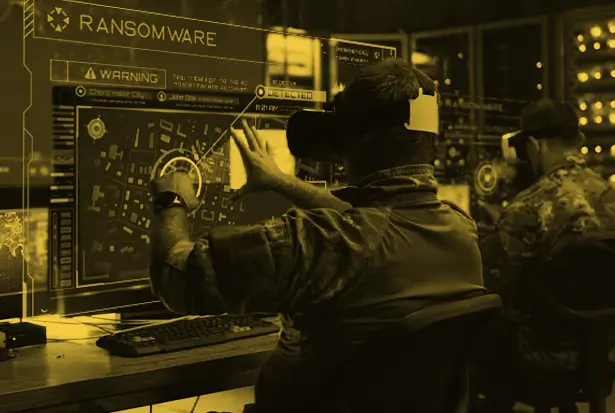
Red Team services
Our Red Team cybersecurity service goes beyond traditional audits.
We simulate real-world attacks, performed by ethical hackers, to assess the resilience of your infrastructure. We infiltrate your systems just as cybercriminals would, but with a single, clear objective: to uncover your vulnerabilities before real attackers do.
Fill in the form and we will call you back

Red Teaming Services
The mission of the Red Team in cybersecurity is to simulate a sponsored external agent performing unauthorized access to corporate systems. This involves not only classic intrusion but also long-term persistence, privilege escalation within corporate systems, and even the alteration and theft of strategic business information.
During their execution, Red Team services continuously assess the detection and response capabilities of the security team (Blue Team), simulating the actions of a hostile actor and testing defenses against a real attack.
Attack scenarios can be designed and guided by threat intelligence (TLPT), as defined by the TIBER and DORA framework, providing these exercises with increased realism.
Benefits of Red Team services
Red Team services help detect and contain a penetration event at an early stage which results in preventing strategic information theft and corporate system down-time. This goal is gradually achieved thanks to:
Detection of the company’s transversal weaknesses.
- Verifies the real impact of a cyberattack against your company by executing offensive cybersecurity exercises led by a threat intelligence team.
Improvement and strengthening of response procedures
- Helps rapidly evolve the capabilities of the defensive team, allowing them to more effectively combat real situations they may potentially face in the future.
Improvement of monitoring systems
- Reveals which suspicious activities have not been detected by monitoring systems, identifying and resolving weaknesses in the event detection and analysis process.
Training of security personnel
- Trains security personnel to respond to real incidents by thoroughly analyzing the intrusion in joint working sessions between the offensive and defensive teams.

How the Red Team Service is Carried Out
The BlackArrow team designs a complete attack scenario, defining the starting point and milestones to achieve during the intrusion execution, and carries it out without the knowledge of the company's cybersecurity team.
- Asset Identification: We discover and map assets, applications, and technologies used.
- Simulation of Real Attacks: We identify high-impact vulnerabilities and test them to see how the defenses would respond to different types of threats.
- Continuous Improvement: We not only detect failures but also offer specific solutions to strengthen security as we advance in intrusion and persistence within the network.
- Regulatory Adaptation: We help your company comply with industry-required regulations and security standards, enhancing its cyber resilience.
From Perimeter Breach to Ransomware Simulation
Red Team Scenarios
Red Team Scenarios mimic threat actors like Remote Attackers, Malicious Employees or Ransomware Simulation among others.
Companies are continuously exposed to threat actors or adversaries that can introduce risks in several ways. According to that context, our Red Team simulates threat actors or adversaries looking for a particular objective. That is what it is called a Red Team Scenario.
The following table illustrates some alternatives that could be used to define the most suitable Red Team Scenario for a particular exercise:
Threat Actors
- Remote attacker
- Compromised Third Party or collaborator
- Compromised or disgruntled employee
- Competitors
- Activist / Terrorist
- Any other threat actors to be agree with our Clients
Intrusion vectors
- Vulnerability exploitation
- Social Engineering (including phishing)
- Password guessing
- WiFi or Ethernet
- Remote Access or VPN
- Leaked information (including user accounts)
Objectives
- Privilege escalation
- Targeted compromise (ERP, Treasury, OT, SCADA)
- Deploy Ransomware
- Leak sensitive information
- Leak/manipulate/sabotage products (software, patents)
- Force payments
- Any other objective to be agreed with our Clients

Red team scenarios examples
In fact, like a real threat actor, Red Teaming services can simulate multiple scenarios to maximize success.
By choosing the most relevant Threat Actors and Objectives, it is possible to define particular Red Teaming Scenarios that can be found in a real environment. The following scenarios are only representative examples of what it can be found in a real environment:
- A competitor using a leaked user account to access sensitive information (patents)
- An activist trying to exploit a vulnerability to access SCADA infrastructure and perform sabotage activities
- A disgruntled employee collaborating to perform a malicious payment to a third party account
- A partner accessing corporate services, leads to a major compromise of deploying ransomware
Ransomware simulation
This list is endless, and any realistic scenario could be reproduced as a Red Team Scenario
It is important to note that Red Teaming is much more than a Red Team scenario, but Ransomware Simulation exerciseshave gained some attention in the last few months. As ransomware attacks are becoming more frequent and sophisticated, organizations are increasing their effort to face any potential ransomware attack. Frequent questions clients ask us:
- Is my organization prepared to face a ransomware attack?
- Would my defensive layers identify, contain and recover from a targeted ransomware attack?
- Does my organization have experience to learn from other ransomware attacks and learn lessons from that experience?


Resilience in front of a ransomware attack
In the case that some of your answers were “no”, you may consider performing a Red Team Scenario focused on Ransomware Simulation exercises. In the particular case of Ransomware Simulation exercises we suggest two differentiated stages:
- Red Team Scenario: Performing activities included in a Ransomware Simulation exercise by replicating a realistic targeted ransomware attack.
- Gap-Analysis.: One advisor analyzes how our client defensive layers have detected, contained and recovered assets during the Red Team Scenario identifying improvement possibilities you can implement.
Why is our service different?
Our Red Team exclusively performs Red Team exercises. It simulates threat actors or adversaries with the objective of obtaining unauthorized access to corporate assets, and we work hand in hand with our Threat Hunting and Threat Intelligence teams to improve our capabilities.

RED TEAM LABS
From 0 day to exploit
- Analysis of company technologies.
- Advanced vulnerability testing on company technologies.
- Targeted 0-days.
- Targeted exploits.

RED TEAM INTEL
Continuous reconnaissance
- Reconnaissance activities on public information.
- Identification of infrastructure, services, applications, and potential leaks.
- Inventory maintenance to map technologies with new vulnerabilities as they are published.

PERSISTENCE
Proprietary APTs
- Our Red Team develops its own custom APTs (for Windows and Linux), which, in addition to being undetectable by antivirus, have advanced techniques to allow persistence and remote control.

WORLD-CLASS TEAM
Cutting-edge experts
- Multiple vulnerabilities reported and accredited in widely used software, as well as active participants in the CTF community (first place in European events). Recognition in reputed "full disclosure" programs.
Red team FAQs
What is a Red Team exercise?
A Red Team exercise is the design and execution of an offensive operation aimed to simulate a certain Malicious Actor. This can verify the organization’s defensive layers and identify not only high/critical risk vulnerabilities but also testing the real detection and response capabilities provided by the organization.
What is the difference between pentesting and red teaming?
While a penetration test usually is constrained to a particular scope and focuses mainly on vulnerabilities, a red team service should not have a limited scope but at the same time maintain focus on resilience rather than on vulnerabilities.
Under that context the outcome of a red team exercise should be a representation about how well an organization is prepared to face a certain Malicious Actor.
How long does it take to conduct a red teaming service?
It depends on the designed exercise. Typically, an exercise without any previous information about an organization, could take a minimum of 3 months to obtain results. This however will represent the real situation of the defensive layers. Meanwhile other exercises starting with a certain level of access to internal resources could require less time.
Mature organizations tend to hire continuous red teaming operations, allowing them to perform several exercises during the year.
Could a red team service cause any damage or disruption?
As any other offensive service, a red team exercise could lead to undesirable situations including damage or disruption. That is the reason why risk management is a key component of Red Teaming, including not only an extremely experienced and accurated team but also insurance policies to be covered for those unexpected situations.
How does a red team versus blue team exercise help an organization?
During a Red Team exercise Blue Team technology, procedures and people can be trained to test if the defensive layers are working as expected.
Once a Red Team exercise has been completed, establishing working sessions with the Blue Team can help organizations to identify areas of improvement as well as sharing experiences to be prepared in the future.